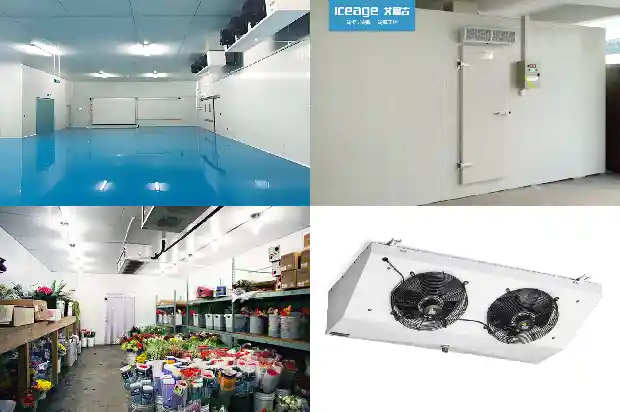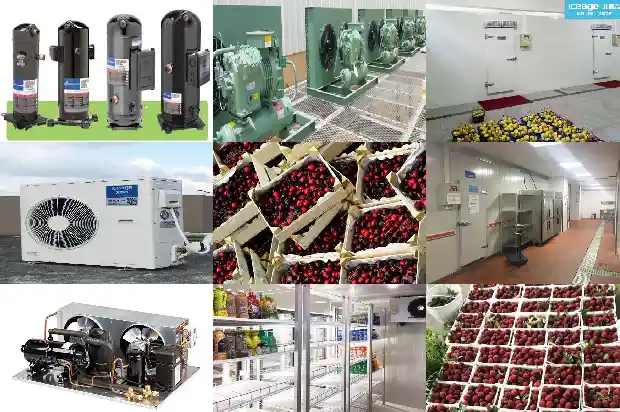Working Principle of Economizer for Refrigeration Compressor
2024-09-16
The economizer is a heat exchanger. Through the throttling and evaporation of the refrigerant itself to absorb heat, another part of the refrigerant is subcooled. The economizer is often used in the refrigeration system of the secondary air inlet screw compressor. Under the working condition with relatively low evaporation temperature (below -25°C), the efficiency of ordinary single-stage screw compressors is reduced, the refrigeration capacity is reduced, and the exhaust temperature is relatively high. The use of the economizer gas-supplementing cycle can improve the efficiency of the single-stage screw compression refrigeration cycle, increase the refrigeration capacity, and reduce the compressor exhaust temperature. The use of the economizer can make the application range of single-stage screw compressors wider and more economical.
Ammonia economizer
(1) The ammonia economizer is a flooded heat exchanger. After a part of the ammonia liquid is throttled, it evaporates outside the tube and enters the compressor air-supplementing port. Another part of the ammonia liquid is subcooled inside the tube.
Fluorine economizer
(2) The fluorine economizer is a dry heat exchanger. After a part of the Freon liquid is throttled, it evaporates inside the tube and enters the compressor air-supplementing port. Another part of the Freon liquid is subcooled outside the tube.
Working principle:
Due to the characteristics of the compression process of the screw compressor (the volume of the compression chamber decreases and moves along the axial direction of the rotor), an additional suction port can be formed at the place where the suction stage has been completed and the gas pressure in the compression chamber has increased slightly.
Therefore, it is possible to input an additional gas flow rate without affecting the suction volume, that is, an additional subcooled circuit can be added to the refrigeration system. In this way, due to the larger subcooling, the refrigeration capacity will be greatly increased, and the increase in input power caused by the input of additional mass flow rate is small. The improvement of system efficiency can be explained as the generation of additional compression work comes from the higher suction pressure, so the system has a higher efficiency.
The economizer circuit is shown in the figure below. The heat exchanger exchanges heat in countercurrent between the refrigerant expanded to the intermediate injection pressure by 引出 from the liquid pipeline and through the expansion valve and the refrigerant liquid with residual heat.
A container with two-stage expansion at intermediate pressure can also be made.
Selection of components:
Subcooler: Shell-and-tube, double-pipe, and plate heat exchangers can all be used. The cooling capacity of the subcooler can be obtained from the difference between the refrigeration capacity with and without the economizer. The subcooled liquid temperature must be at least 10 K higher than the saturation temperature at intermediate pressure.
Expansion valve: To prevent wet operation when the subcooler circuit is connected, it is recommended to use an expansion valve designed for liquid injection, with a superheat setting of about 10 K.
Additional suggestions:
The refrigerant subcooler should be installed under the compressor to prevent the reflux of oil or liquid in the compressor during shutdown. When the operating conditions are unstable or when the subcooled circuit is shut off, the compressor will squeeze some oil out of the economizer injection port. Therefore, the liquid injection pipeline should be bent into a curved section. Since the economizer injection is directly connected to the rotor tooth profile, it is recommended to install a particularly fine filter (25um) on this pipeline.
Operating range:
Due to the compression of additional gas and the consequent motor overload, the operating range of using the economizer will be partially limited under high-temperature working conditions.
For high condensation temperatures, the motor should be enlarged.
Attention! The subcooled circuit can only be used when the compressor is at full load.
During the start-up stage (low load state), the subcooled circuit should be closed until the operating conditions are stable.
Ammonia economizer
(1) The ammonia economizer is a flooded heat exchanger. After a part of the ammonia liquid is throttled, it evaporates outside the tube and enters the compressor air-supplementing port. Another part of the ammonia liquid is subcooled inside the tube.
Fluorine economizer
(2) The fluorine economizer is a dry heat exchanger. After a part of the Freon liquid is throttled, it evaporates inside the tube and enters the compressor air-supplementing port. Another part of the Freon liquid is subcooled outside the tube.
Working principle:
Due to the characteristics of the compression process of the screw compressor (the volume of the compression chamber decreases and moves along the axial direction of the rotor), an additional suction port can be formed at the place where the suction stage has been completed and the gas pressure in the compression chamber has increased slightly.
Therefore, it is possible to input an additional gas flow rate without affecting the suction volume, that is, an additional subcooled circuit can be added to the refrigeration system. In this way, due to the larger subcooling, the refrigeration capacity will be greatly increased, and the increase in input power caused by the input of additional mass flow rate is small. The improvement of system efficiency can be explained as the generation of additional compression work comes from the higher suction pressure, so the system has a higher efficiency.
The economizer circuit is shown in the figure below. The heat exchanger exchanges heat in countercurrent between the refrigerant expanded to the intermediate injection pressure by 引出 from the liquid pipeline and through the expansion valve and the refrigerant liquid with residual heat.

A container with two-stage expansion at intermediate pressure can also be made.
Selection of components:
Subcooler: Shell-and-tube, double-pipe, and plate heat exchangers can all be used. The cooling capacity of the subcooler can be obtained from the difference between the refrigeration capacity with and without the economizer. The subcooled liquid temperature must be at least 10 K higher than the saturation temperature at intermediate pressure.

Expansion valve: To prevent wet operation when the subcooler circuit is connected, it is recommended to use an expansion valve designed for liquid injection, with a superheat setting of about 10 K.
Additional suggestions:
The refrigerant subcooler should be installed under the compressor to prevent the reflux of oil or liquid in the compressor during shutdown. When the operating conditions are unstable or when the subcooled circuit is shut off, the compressor will squeeze some oil out of the economizer injection port. Therefore, the liquid injection pipeline should be bent into a curved section. Since the economizer injection is directly connected to the rotor tooth profile, it is recommended to install a particularly fine filter (25um) on this pipeline.
Operating range:
Due to the compression of additional gas and the consequent motor overload, the operating range of using the economizer will be partially limited under high-temperature working conditions.
For high condensation temperatures, the motor should be enlarged.
Attention! The subcooled circuit can only be used when the compressor is at full load.
During the start-up stage (low load state), the subcooled circuit should be closed until the operating conditions are stable.

Related Articles
- Principles, Components and Heat Recovery of Modular Units
- What are Refrigeration Equipment? What's the Principle of Chillers?
- What Is the Working Principle of Refrigeration Equipment?
- Operating Principle and Standard Installation Steps of Multi - split Systems in Refrigerant Air - conditioning Systems
- Working Principle of AC Inverter and DC Inverter Air Conditioners
- What's the principle and function of air energy?
- Principles of Refrigeration Systems and Functions of Components Explained
- Working Principle and Control Logic of Centrifugal Compressor
- Function and Working Principle of Subcooler
- Fault Analysis of Working Principle of Screw Chiller Unit
- Principle of Multiple Storages in One Unit and Evaporation Pressure Regulation Methods
- Principle and Refrigeration Process of Piston Refrigeration Compressor
- Characteristics and principles of air-cooled and water-cooled units
- Air-source heat pump: Principle of cooling and heating in one machine
- Industrial screw water chiller working principle
- Water Cooled Unit Principle of Operation and Parameter Failure Analysis
- The principle of air conditioning refrigeration
- Air - side Economizer
